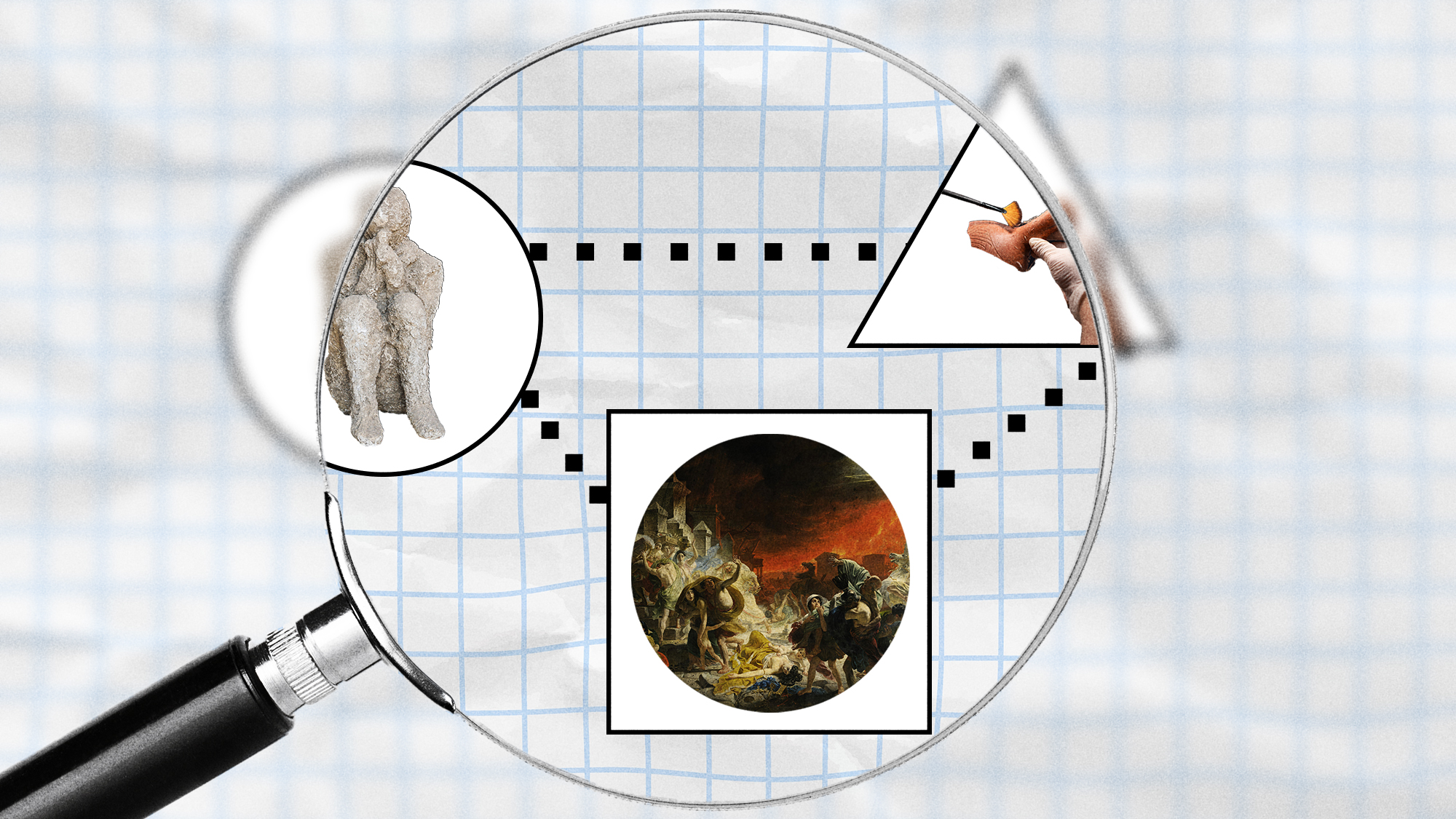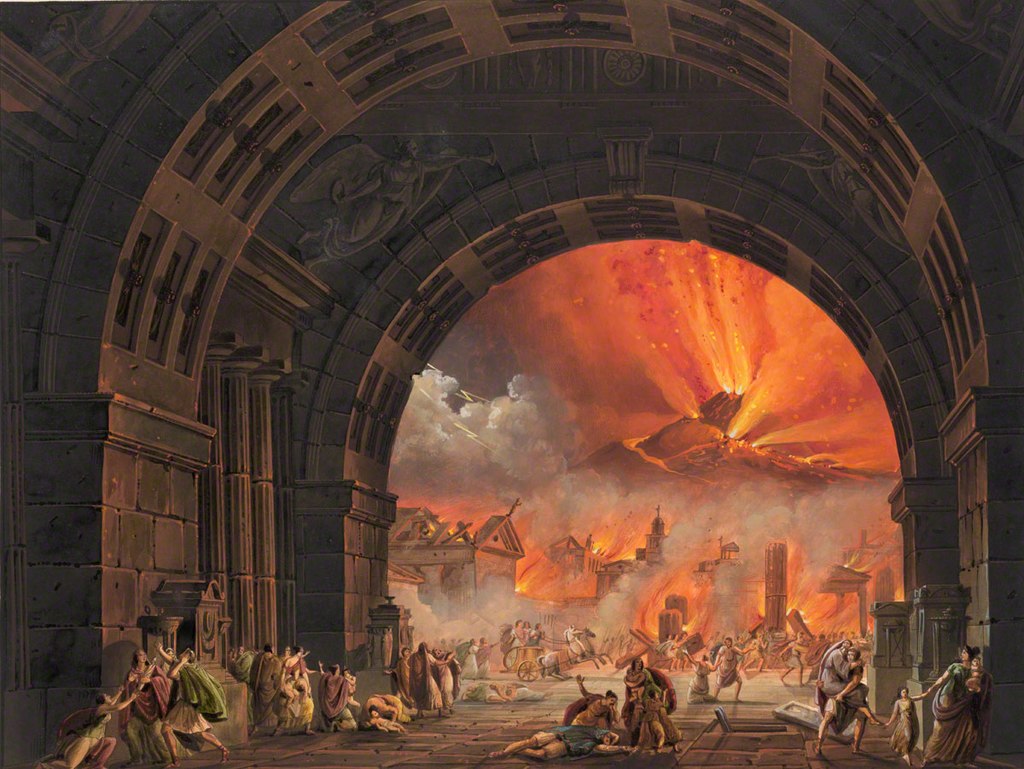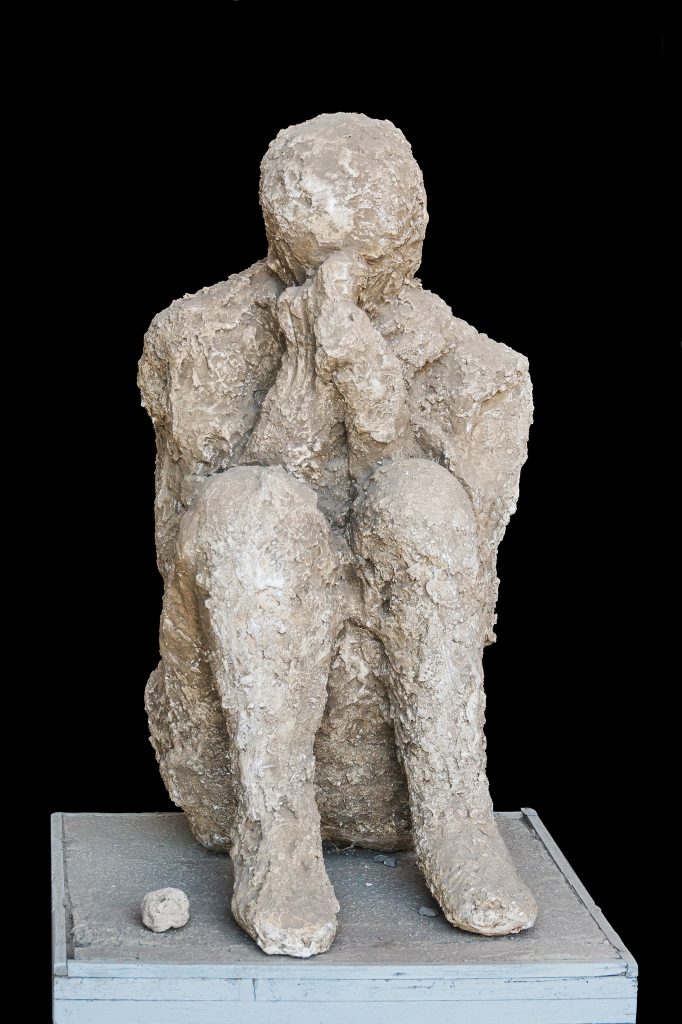In 79 A.D., Mount Vesuvius’s volcanic eruption wiped out one of the most prosperous regions of the Roman world, erasing Pompeii, Herculaneum, Stabiae, and hundreds of rural settlements from the map. For centuries, it was believed that this occurred on August 24th and that nearly the region’s entire population perished as a result of the disaster. However, research over the past few decades, along with the most recent archaeological discoveries, has rewritten history.
In fact, we now know that the cataclysm likely occurred in late October and that around 90% of the region’s population managed to survive. These findings obviously change our understanding of the events. They also offer important lessons on human resilience and crisis management. Through archaeological data, we are able to grasp the magnitude of the devastation as well as analyze the measures taken afterward, the challenges survivors faced, and what their experiences can teach us about handling modern-day crises.
Allesandro Sanquirico’s set design for the eruption of Mt. Vesuvius in Pacini’s opera L’ultimo giorno di Pompei, 1827 La Scala production.
In the early hours of the eruption, confusion and chaos overtook Pompeii. Most of the inhabitants rushed to flee the city, frightened by the tremors, the darkened sky, and the rain of ash and volcanic material. Remains found by archaeologists near the Stabian Gate, alongside the city walls, show the imprints of cartwheels and human footprints, the attempts at escape. Although exact figures are unknown, it is estimated that 90% of Pompeii’s population survived, with the key to that survival being their quick reaction. Contrary to what is commonly believed, the destructive eruption, whose peak lasted over a day, was preceded by quakes and tremors. Death was not immediate and, especially in the case of Pompeii which received a rain of lapilli and ash over twelve hours due to winds, people had various opportunities to flee.
In a time absent of early warning systems, the ability to read nature’s signals and act promptly made all the difference between life and death in Pompeii. In the Campania region, however, there was utter devastation the day after the eruption of Vesuvius. Entire cities had disappeared, and those that were not buried, like Neapolis (modern Naples) or Sorrentum (modern Sorrento), suffered severe structural damage to many of their buildings.
Cast of a sitting victim of the eruption of Mount Vesuvius, Pompeii, Italy.
One striking detail in the case of Pompeii in particular is the speed with which Emperor Titus acted in order to prevent a complete social collapse throughout the region. The emperor himself visited the region and, according to Roman historians Suetonius and Cassius Dio, he allocated public funds for reconstruction and appointed two of his ex-consuls to manage the recovery. Some of the buildings from cities partially affected by the disaster were reconstructed, as we can read in the inscriptions displayed after restoration works. Following Emperor Titus’s program, the property of those who died without heirs was redistributed in order to finance the restoration and recovery of the area. This allowed survivors to find land and resources to start anew.
This model of state intervention is familiar to us today. In contemporary disasters, such as the recent volcanic eruption in Spain’s La Palma or the Covid-19 pandemic, governments have taken responsibility for coordinating humanitarian aid, mobilizing resources, and allocating funds for reconstruction and recovery. In the case of La Palma, though it was a completely different type of volcanic eruption, the country solidarized with displaced people immediately after the cataclysm started – the royal family visited the devastated region and the Spanish government allocated emergency funds for those communities affected.
But, of course, it is not only immediate action that is necessary in such cases. Governments – and businesses – must be prepared to support reconstruction and reintegration for years after the initial event. Following the eruption on August 24, 79 AD, thousands of survivors not only faced complete material loss but also needed to find a new home. Among the refugees, many families from Pompeii and Herculaneum moved to nearby coastal cities like Neapolis, Puteoli (modern Pozzuoli), or Cumae (modern Cuma). There, they had pre-existing connections through family and business ties, and commercial, maritime, and economic activities were key factors in choosing a new destination. In some cases, groups of people resettled together. This is what happened, for example, in Neapolis, where a new neighborhood called Regio Herculensis was constructed for the survivors from Herculaneum (which had been completely destroyed beneath 25 meters of volcanic material.) We do not have enough archaeological data to confirm this was promoted within Emperor Titus’s reconstruction program, but it was, undoubtedly, part of the social response from neighboring cities and communities.
Not all survivors remained in the region, however. Some Pompeiians moved to other coastal cities and an inscription from Ostia, a port city near Rome, shows that two families – the Caltilians and Munacians – managed to rebuild their lives in the new port city, prospered, and their members intermarried. In this sense, personal relationships and pre-existing social networks were factors that facilitated starting fresh in a different location.
This points to the important role strategic relocation plays after a disaster of this magnitude. Crisis management was not limited to saving lives during the event but also ensuring that those affected could rebuild their lives. More than an imposed program from Emperor Titus, it is now believed survivors were able to relocate in different places thanks to their personal connections and in line with their preferences. Their personal response to manage such a crisis was also essential. For instance, we now know that Faustus and Onirus, two brothers from Puteoli and active financiers in the so-called Bank of the Sulpicii, resettled in Cumae after the eruption. Not all survivors stayed in the region. Some, like Cornelius Fuscus, sought new opportunities far from the devastated area. Fuscus went to Dacia (modern Romania), where he played an important role as a general in the Roman army; he moved there after having lived briefly in Neapolis and Pompeii. The funerary inscription of his tomb, dated to ca. 86 A.D., has been taken as another example of resettlement.
The eruption of Mount Vesuvius not only obliterated Pompeii and Herculaneum but also left the surrounding areas in ruin, forcing many survivors to either rebuild in an inhospitable environment or seek livelihoods elsewhere. It took a couple of generations for life to restart in a new normal over layers of destruction. In our globalized world, these examples are more relevant than ever: facilitating integration into new communities, fostering the creation of social bonds, and providing the necessary resources for reconstruction or overcoming any situation are essential elements to ensuring long-term recovery and success.
This phenomenon is particularly relevant in modern crisis management, where mobility and flexibility are key elements for recovery in a globalized world. For instance, following the 2004 Indian Ocean Tsunami, survivors who relocated to cities with better economic opportunities, particularly in Aceh, Indonesia, found it easier to recover.
Data from the U.S. Federal Emergency Management Agency (FEMA) and the United Nations shows that individuals who can relocate after disasters often access better resources, including employment, healthcare, and education, compared to those who remain in the affected regions. Mobility plays a crucial role in recovery, highlighting the importance of flexibility and adaptation in rebuilding lives. This has broader implications for disaster management in the modern world, where the ability to move and adapt can significantly influence the speed and success of recovery.
The story of Pompeii is not just a tale of destruction, even less so now that recent excavations and research are rewriting the life and afterlife of this Roman city. Rather, it is an example of human resilience, agility, and adaptability. This is what is so wonderful about continually uncovering the past: we do not simply find artifacts but information that allows us to rewrite history, navigate our modern-day crises, and even anticipate the uncertainties of future challenges. The eruption of Mount Vesuvius and its aftermath offers us lessons in crisis management that we can put to use today:
- Early warning and quick response: the survival of the large majority of Pompeii’s population underscores the importance of recognizing danger signs and acting swiftly. In our modern context, this means investing in early warning systems and educating communities about emergency protocols and the effectiveness of quick responses.
- Governmental support and resource allocation: Emperor Titus’s swift action in allocating resources and appointing leaders for recovery efforts should not be undervalued. His historical example is not easily copied and shows the need for leaders who are prepared and proactive in times of crisis. These leadership traits found in history are increasingly important to our present.
- Leveraging social networks: the relocation patterns of Pompeii’s survivors show how important social and economic networks are for a region’s crisis recovery. Today, this includes digital platforms and other community-based support systems that connect affected individuals with resources and assistance, to facilitate an appropriate response to every crisis.
As we face increasingly complex global challenges – from climate change to pandemics – our past continues to be a source of inspiration and a lesson to navigate the future.
© IE Insights.













